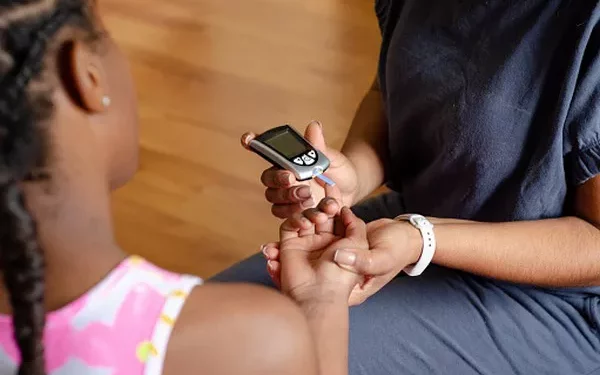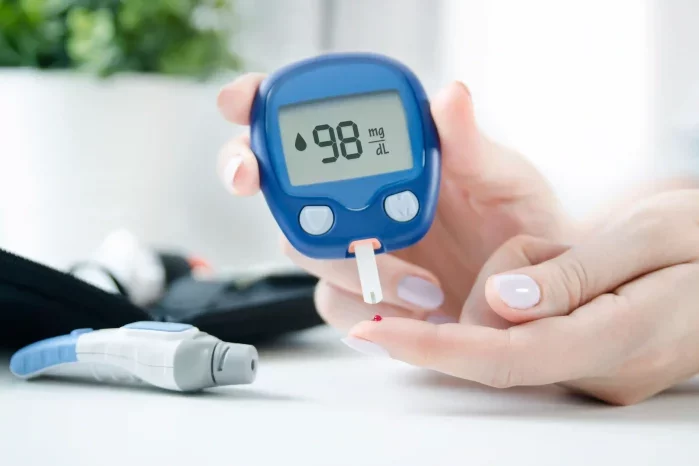Diabetes is a chronic medical condition that affects millions of people worldwide. It occurs when the body’s ability to produce or respond to insulin—an essential hormone for blood sugar regulation—is impaired. As a result, individuals with diabetes may experience elevated blood sugar levels, which, if left unmanaged, can lead to a range of serious health complications.
Managing blood glucose levels is one of the most critical aspects of diabetes care. A key component of effective diabetes management is understanding and maintaining a target glucose range. Achieving optimal blood sugar control can significantly reduce the risk of long-term complications such as heart disease, kidney damage, nerve damage, and vision problems.
This article provides a detailed guide to understanding what your target glucose range should be, the factors that influence this range, and practical strategies to achieve and maintain healthy blood glucose levels.
What is Blood Glucose?
Blood glucose, also known as blood sugar, is the amount of glucose (a type of sugar) present in your blood. Glucose is the primary source of energy for your body’s cells. It comes from the foods you eat, particularly carbohydrates, and is absorbed into the bloodstream after digestion. Insulin, a hormone produced by the pancreas, helps transport glucose into the cells, where it is used for energy or stored for later use.
For individuals without diabetes, blood glucose levels are typically well-regulated by the body, fluctuating within a narrow range throughout the day. However, for people with diabetes, this regulation is disrupted, leading to either chronically high blood glucose (hyperglycemia) or dangerously low blood glucose (hypoglycemia).
Why is Blood Glucose Control Important?
Maintaining stable blood glucose levels is crucial for individuals with diabetes. Poorly controlled blood glucose can lead to both short-term and long-term complications. Short-term complications include:
Hyperglycemia: Elevated blood glucose levels can cause symptoms such as frequent urination, excessive thirst, fatigue, and blurred vision. Prolonged hyperglycemia can increase the risk of long-term damage to vital organs.
Hypoglycemia: Low blood glucose levels can lead to symptoms like dizziness, confusion, shakiness, and, in extreme cases, loss of consciousness or seizures.
Long-term uncontrolled blood glucose can result in complications such as:
Cardiovascular disease: High blood sugar levels can damage blood vessels, increasing the risk of heart disease and stroke.
Neuropathy: High glucose levels can damage nerves, leading to numbness, pain, and tingling in the hands and feet.
Retinopathy: Prolonged hyperglycemia can damage the blood vessels in the eyes, leading to vision problems and, in severe cases, blindness.
Kidney damage (Nephropathy): Chronic high blood glucose can cause damage to the kidneys, leading to kidney disease and eventual kidney failure.
By controlling blood glucose levels, individuals with diabetes can significantly reduce the risk of these complications and improve their overall health and quality of life.
What is My Target Glucose Range?
Your target glucose range is the optimal range of blood sugar levels that you should aim for throughout the day to maintain your health and avoid complications. The target range varies depending on several factors, including your type of diabetes, age, lifestyle, overall health, and the treatment plan prescribed by your healthcare provider.
Target Blood Glucose for People with Type 1 Diabetes
Type 1 diabetes is an autoimmune condition in which the body’s immune system attacks the insulin-producing cells in the pancreas. People with type 1 diabetes must take insulin daily to manage their blood sugar levels.
For individuals with type 1 diabetes, the general target glucose range is:
- Before meals (preprandial): 80–130 mg/dL (4.4–7.2 mmol/L)
- Two hours after meals (postprandial): Less than 180 mg/dL (10.0 mmol/L)
These targets are designed to keep blood glucose levels within a healthy range while minimizing the risk of both hyperglycemia and hypoglycemia. Your healthcare team may adjust these targets based on your personal health needs and treatment plan.
Target Blood Glucose for People with Type 2 Diabetes
Type 2 diabetes is a metabolic condition in which the body becomes resistant to insulin, or the pancreas does not produce enough insulin to maintain normal blood glucose levels. Most people with type 2 diabetes can manage their condition through lifestyle changes, oral medications, and sometimes insulin.
For individuals with type 2 diabetes, the general target glucose range is:
- Before meals (preprandial): 80–130 mg/dL (4.4–7.2 mmol/L)
- Two hours after meals (postprandial): Less than 180 mg/dL (10.0 mmol/L)
These targets aim to keep blood glucose levels stable, preventing spikes after meals while also reducing the risk of long-term complications. Again, these targets may vary depending on individual factors, such as the presence of other health conditions.
Target Blood Glucose for Pregnant Women with Diabetes (Gestational Diabetes)
Gestational diabetes is a form of diabetes that occurs during pregnancy. It can develop when the body cannot produce enough insulin to meet the increased demands during pregnancy, leading to high blood glucose levels.
For pregnant women with diabetes, the target blood glucose range is typically more stringent, as blood sugar levels need to be closely controlled to protect both the mother and the baby.
- Fasting (before meals): Less than 95 mg/dL (5.3 mmol/L)
- One hour after meals: Less than 140 mg/dL (7.8 mmol/L)
- Two hours after meals: Less than 120 mg/dL (6.7 mmol/L)
These targets are designed to minimize the risk of complications during pregnancy, including high birth weight, premature birth, and the development of type 2 diabetes later in life.
Factors That Influence Your Target Glucose Range
While general guidelines exist for blood glucose targets, each person’s target range may be slightly different depending on several factors:
Age: Younger individuals may have a slightly wider target range, while older adults may need tighter control of their blood glucose levels due to the increased risk of complications associated with aging.
Duration of Diabetes: Individuals who have had diabetes for a long time may need stricter control of their blood glucose levels to prevent complications. However, excessively tight control can sometimes lead to hypoglycemia, especially in older individuals.
Presence of Other Health Conditions: If you have other health conditions, such as high blood pressure or kidney disease, your target glucose range may be adjusted to reduce the risk of complications.
Pregnancy: As mentioned earlier, pregnant women with diabetes (gestational diabetes) need to maintain even tighter control over their blood glucose levels to protect both themselves and their baby.
Medications: The type of medication you are taking (e.g., insulin, oral medications, or other diabetes treatments) can influence your blood glucose targets. Your healthcare provider will adjust your targets to ensure they align with your treatment plan.
Lifestyle Factors: Your diet, physical activity level, stress, sleep, and other lifestyle factors can all impact your blood glucose levels. Regular monitoring and adjustments to your target range may be necessary as these factors change.
How to Monitor and Maintain Your Target Glucose Range
Achieving and maintaining your target glucose range requires regular monitoring and consistent lifestyle management. Here are some practical tips for managing your blood glucose levels effectively:
1. Regular Blood Glucose Monitoring
Monitoring your blood glucose levels regularly is essential for managing diabetes. People with diabetes are typically advised to check their blood glucose at least several times a day, especially before and after meals. Continuous glucose monitoring (CGM) devices can also provide real-time data and help you track trends in your blood glucose levels throughout the day.
2. Healthy Eating
A well-balanced diet is key to managing blood glucose levels. Focus on:
Complex carbohydrates: Whole grains, vegetables, and legumes provide fiber and have a slower impact on blood sugar levels than refined carbohydrates.
Lean proteins: Incorporate lean meats, fish, eggs, and plant-based proteins to help regulate blood sugar and promote satiety.
Healthy fats: Avocados, olive oil, nuts, and seeds are sources of heart-healthy fats that can help with insulin sensitivity.
Low-GI fruits and vegetables: As discussed earlier, consuming fruits and vegetables with a low glycemic index is an excellent strategy for managing blood glucose.
3. Physical Activity
Exercise helps your body use insulin more effectively and can lower blood glucose levels. Aim for at least 150 minutes of moderate-intensity aerobic activity per week, such as brisk walking, swimming, or cycling. Incorporating strength training exercises at least two days per week is also beneficial for blood sugar control.
4. Stress Management
Stress can raise blood glucose levels by triggering the release of stress hormones like cortisol and adrenaline. Incorporating stress-reducing activities like yoga, meditation, and deep breathing exercises into your daily routine can help keep your blood glucose stable.
5. Medication and Insulin
Follow your healthcare provider’s recommendations regarding medications, insulin injections, or other treatments. Your blood glucose target range may need to be adjusted based on the effectiveness of your medications or insulin regimen.
Conclusion
Maintaining your target glucose range is a crucial part of managing diabetes and preventing complications. While general guidelines exist, your specific target range will depend on factors such as your age, overall health, treatment plan, and lifestyle. By regularly monitoring your blood glucose, adopting a healthy diet, staying active, managing stress, and adhering to your prescribed treatment plan, you can effectively manage your diabetes and lead a healthy, active life. Always work closely with your healthcare provider to determine the most appropriate glucose range for you, and make adjustments as needed to maintain optimal health.
Related topics:
What to Eat to Keep Your Blood Sugar Normal
How Often Should You Check Your Blood Sugar with Type 2 Diabetes?



























